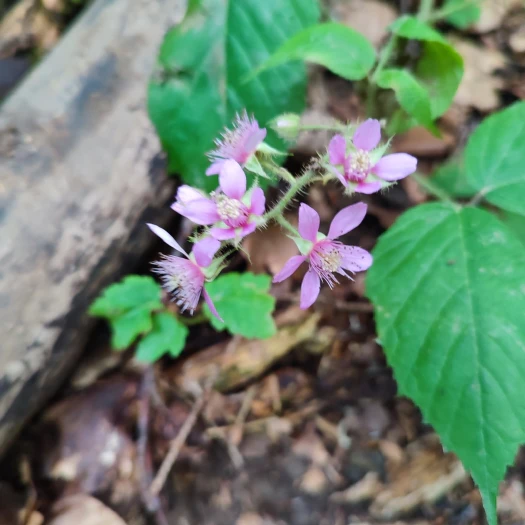Hairy Blackberry
(Rubus hirtus)
Hairy Blackberry (Rubus hirtus)
/
/

© xulescu_g
CC BY-SA 4.0
Image By:
© xulescu_g
Recorded By:
Copyright:
CC BY-SA 4.0
Copyright Notice:
Photo by: © xulescu_g | License Type: CC BY-SA 4.0 | License URL: http://creativecommons.org/licenses/by-sa/4.0/ | Uploader: xulescu_g | Publisher: iNaturalist |























Estimated Native Range
Climate Requirements for Fort Pierce, Florida
| This Plant | Your Site | Plant Suitability for Your Location | ||
|---|---|---|---|---|
| • Precipitation | 10" - 98" | 53" | Aquatic | Aquatic |
| • High Temp. | 44°F - 91°F | 91°F | Your summer temperatures are normal for this plant. | Excellent |
| • Low Temp. | 8°F - 48°F | 53°F | OK, but your winter temperatures are warmer than normal for this plant | OK |
This plant may not grow well at your location - your precipitation is too high.
Summary
Rubus hirtus, commonly referred to as the Hairy Blackberry, is a deciduous shrub native to a variety of habitats including open woodlands, forest edges, and scrublands across southern and central Europe, Belarus, Ukraine, the Caucasus, and Turkey. It typically grows to a height of 3-6 feet (1-2 meters) with a similar spread, and is characterized by its arching canes covered in small, stiff hairs. The plant produces white to pale pink flowers in late spring to early summer, which are moderately showy and give way to edible blackberries that are attractive to wildlife. The fruit is also appreciated by humans for its culinary uses.
The Hairy Blackberry is valued for its fruit production and as a wildlife attractant in gardens. It is suitable for naturalistic plantings, hedgerows, and can be used to stabilize soil in restoration projects. This species prefers well-drained soil, tolerates a range of soil types, and requires full sun to part shade conditions. While it is relatively low-maintenance, it can become quite dense and may require pruning to manage its spread. Gardeners should be aware that Rubus hirtus can be potentially invasive outside its native range and may outcompete local flora.CC BY-SA 4.0
The Hairy Blackberry is valued for its fruit production and as a wildlife attractant in gardens. It is suitable for naturalistic plantings, hedgerows, and can be used to stabilize soil in restoration projects. This species prefers well-drained soil, tolerates a range of soil types, and requires full sun to part shade conditions. While it is relatively low-maintenance, it can become quite dense and may require pruning to manage its spread. Gardeners should be aware that Rubus hirtus can be potentially invasive outside its native range and may outcompete local flora.CC BY-SA 4.0
Plant Description
- Plant Type: Shrub
- Height: 2-6 feet
- Width: 4-6 feet
- Growth Rate: Rapid
- Flower Color: White
- Flowering Season: Spring, Summer
- Leaf Retention: Deciduous
Growth Requirements
- Sun: Full Sun, Part Shade
- Water: Medium
- Drainage: Medium, Fast
Common Uses
Edible*Disclaimer: Easyscape's listed plant edibility is for informational use. Always verify the safety and proper identification of any plant before consumption.
Natural Habitat
Open woodlands, forest edges, and scrublands
Other Names
Common Names: Hill Raspberry
Scientific Names: Rubus hirtus, Rubus abietinus, Rubus angustisetus, Rubus angustisetus, Rubus angustisetus var. obovifrons, Rubus angustisetus var. subbiserratus, Rubus angustisetus var. suboblongifrons, Rubus begoniaefolius, Rubus begoniifolius
GBIF Accepted Name: Rubus hirtus